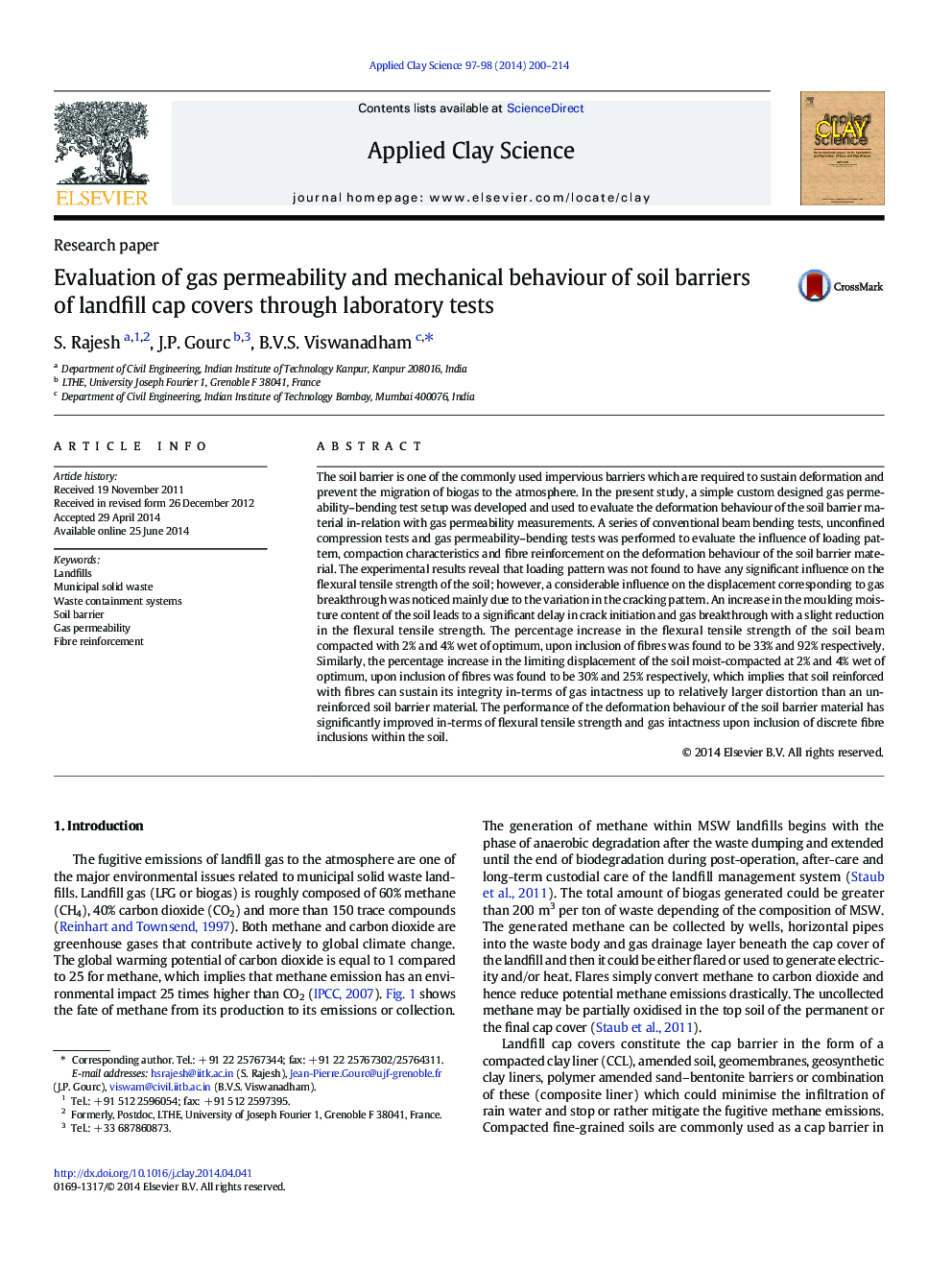| Article ID | Journal | Published Year | Pages | File Type |
|---|---|---|---|---|
| 1694674 | Applied Clay Science | 2014 | 15 Pages |
•The main focus of the present study is to study the gas permeability behaviour of clay barrier material with and without polyester fibre reinforcement through custom designed, fabricated and calibrated gas-k bending tests in the laboratory.•The performance of the deformation behaviour of the clay barrier material has significantly improved in-terms of flexural tensile strength and gas intactness upon inclusion of discrete fibre includsions within the soil.
The soil barrier is one of the commonly used impervious barriers which are required to sustain deformation and prevent the migration of biogas to the atmosphere. In the present study, a simple custom designed gas permeability–bending test setup was developed and used to evaluate the deformation behaviour of the soil barrier material in-relation with gas permeability measurements. A series of conventional beam bending tests, unconfined compression tests and gas permeability–bending tests was performed to evaluate the influence of loading pattern, compaction characteristics and fibre reinforcement on the deformation behaviour of the soil barrier material. The experimental results reveal that loading pattern was not found to have any significant influence on the flexural tensile strength of the soil; however, a considerable influence on the displacement corresponding to gas breakthrough was noticed mainly due to the variation in the cracking pattern. An increase in the moulding moisture content of the soil leads to a significant delay in crack initiation and gas breakthrough with a slight reduction in the flexural tensile strength. The percentage increase in the flexural tensile strength of the soil beam compacted with 2% and 4% wet of optimum, upon inclusion of fibres was found to be 33% and 92% respectively. Similarly, the percentage increase in the limiting displacement of the soil moist-compacted at 2% and 4% wet of optimum, upon inclusion of fibres was found to be 30% and 25% respectively, which implies that soil reinforced with fibres can sustain its integrity in-terms of gas intactness up to relatively larger distortion than an un-reinforced soil barrier material. The performance of the deformation behaviour of the soil barrier material has significantly improved in-terms of flexural tensile strength and gas intactness upon inclusion of discrete fibre inclusions within the soil.
